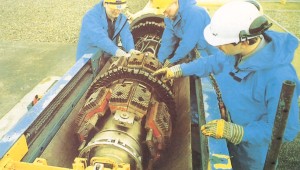In which industrial applications Nickel-Chromium-Molybdenum alloys are used?
The inclusion of chromium to nickel-molybdenum alloys while reducing the content of molybdenum enhancing their oxidation resistance, improving the durability of nickel-molybdneum alloys. Inconel 62 5 is a nickel-chromium-molybdenum alloy that has limited resistance to reducing acids whilst it offers good resistance to nitric and phosphoric acids and various chloride salts. It significantly prevents pitting, chloride stress corrosion cracking and corrosion fatigue. It also resists sensitization and intergranular corrosion and hence suitable for use in the as-welded form.
Characteristics of Inconel 625 that make it suitable are pitting corrosion, high corrosion-fatigue strength, high tensile strength and resistance to chloride ion stress corrosion cracking. Usually marine applications for this low-molybdenum nickel-chromium-molybdenum alloy including wire for mooring cables, propeller blades, submarine fittings, sheaths for undersea communication cables and steam line components. Major applications include cover springs, seals and bellows for submerged controls and fasteners in marine conditions.
Hastelloy C is a high performance nickel base alloy that is made in different grades for providing superior corrosion resistance.
Hastelloy C22 offers overall good corrosion resistance and versatility as compare to other NiCrMo alloy. Better understanding of role of chromium, molybdenum and tungsten is in offering corrosion resistance to nickel base alloys resulting in offering corrosion resistance to nickel base alloys resulted in the development of enhanced alloys like Hastelloy C22. Hastelloy C22 with approximate composition of nickel, chromium, molybdenum, tungsten and iron has the minimum corrosion rate in oxidizing and reducing conditions and offers the highest pitting and crevice corrosion resistance of most nickel base alloys used presently. The thermal stability of Hastelloy C22 is found to be superior to Hastelloy C276 that has larger molybdenum and tungsten concentration.
Hastelloy C is produced in both cast and wrought forms. It is austenitic and non-magnetic. It offers mechanical properties superior to stainless steels and are almost similar to Hastelloy B. Alloy C can be formed and cold developed with solution treatment. Its machining properties are also similar to Hastelloy B .
Generally Hastelloy C is more corrosion resistant to Hastelloy B. It can be used in various inorganic and organic chemical process applications. It is particularly known for offering resistance to wet chlorine and concentrated hypochlorite solutions and is hence finds application in chlorination process plants. It resists corrosion in sulfur dioxide and hydrogen sulfide and can be used with hydrochloric acid at and above room temperatures. The corrosion resistance properties of Hastelloy C also remain stable in the presence of oxidizing salts in hydrochloric acid. Although, it is not better than stainless steels for use in nitric acid or Hastelloy B for service in sulfuric acid, Hastelloy C can withstand sulfuric and phosphoric acids at room temperature and it provides supreme resistance to the action of sulfuric acid in oxidizing acids and nitric and chromic acids, where Hastelloy B would fail. This grade is also used in marine applications and is resistant to chloride ion stress corrosion cracking.
Hastelloy C276 is suitable for use in chemical process industry applications. Overall the Hastelloy alloys are suitable for use in applications that demand high strength and corrosion resistance.


